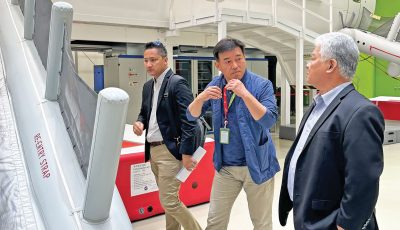Getting excited about astronomy
If, after reading this column, your son or daughter decides they want a new telescope or a pair of binoculars for their new astronomy hobby interest, you can blame it on me. Getting excited about a new hobby for young kids is something that most parents enjoy seeing, especially if they think their child’s new hobby interest will continue to grow into something special over the years. If a child becomes interested in astronomy at a very young age, it’s a good bet they will continue to still enjoy it as a hobby into their adult years too. Then what’s the catalyst that will get their child interested in astronomy in the first place? You guessed it—a new telescope.
It doesn’t really matter too much which kind, type or even the size of telescope they start out with as their first telescope, just so they have a telescope or a pair of small binoculars to observe the heavens with whenever they feel the urge and interest to do so. That’s the catalyst that gets them into studying the stars early in their primary school years.
A new telescope will possibly guide them into a future academic career in the sciences, or some kind of career in engineering maybe. Even better yet, a professional or academic career in astronomy and physics.
So what kind of telescope should a parent get for their child who’s a student in their primary school years? It’s best to start out with a simple 80mm to 90mm refractor telescope on an Alt-azimuth or equatorial mounting, especially for a starter telescope. An Alt-azimuth mounting is very simple (equatorial mountings require slightly more attention to the polar alignment) to operate, adjust, and to point at specific celestial bodies like the moon, planets, star clusters, double stars and bright nebulae such as the beautiful Orion Nebula (M42) in the constellation Orion and other fantastic celestial delights, such as the famous Andromeda galaxy (M31) as well. An 80mm or 90mm refracting telescope on a sturdy tripod can at 80x (power) reveal in great detail small craters and mountain ranges on the moon as well as clearly view the four moons and equatorial belts on the planet Jupiter and the beautiful rings of Saturn as well. And, on very clear stable atmospheric nights, reveal Saturn’s biggest moon Titan too. The best part of your child becoming interested in astronomy is he/she can also learn to take fantastic lunar and planet photo images by simply holding a cell phone camera centered directly over the telescope’s eyepiece and refocus the moon and its craters in the cell phone camera and then snap the photo image. The same goes for the planets Jupiter and Saturn too. It can be as simple as that. Taking photo images of the moon and planets will make for a great middle school and high school science fair project too, especially if a student has taken a series of photos of images of various celestial bodies at various magnifications with their telescope and cell phone camera.
It’s basically an accepted fact that a new telescope or a pair of binoculars will almost always generate a child’s interest in astronomy, space, and the mysteries of our fantastic universe. But where can one to find a good quality telescope for your young budding astronomer here in the Northern Mariana Islands and especially here on Saipan? Finding a good quality telescope and binoculars to buy for your child on Saipan is almost like a treasure hunt, unless you know exactly where to look. You probably won’t find a store that sells them, even in Garapan. You can try calling around to all the different stores and shops on Saipan. Even your chances finding a shop or store in Guam (unless you get lucky) will most likely yield negative results too. You can also do an internet search and find splendid refractor telescopes at premium prices plus big shipping charges from the U.S. mainland to the Northern Mariana Islands for most. My advice is to start looking locally first starting in Susupe (sporting goods store), which will certainly shorten your lead time searching for a quality refractor telescope or a pair of good binoculars for your child’s newfound interest in astronomy and stargazing. Once you purchase a telescope or a pair of binoculars, the entire family will also find time to enjoy looking through that new telescope or binoculars you just purchased for your son or daughter at the heavens too.
***
Norman Butler Ph.D., is a retired astronomer and has been a Saipan resident since 2011. Butler, who holds advanced degrees in Physics and Astronomy, was an opticalman in the U.S. Navy (submarine tenders) throughout the 1960s and worked at Haleakala’s AMOS Observatory on Maui starting in the 1980s. He has also authored four popular books on binoscopes and taught at Shenzhen Polytechnic College and Harbin Institute of Technology Shenzhen Graduate School in Shenzhen, China.



























